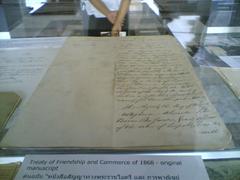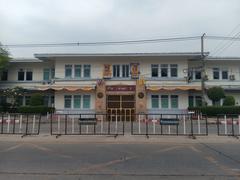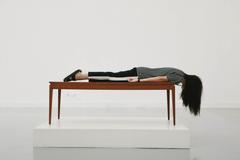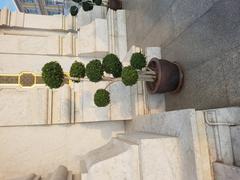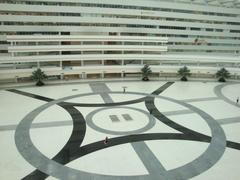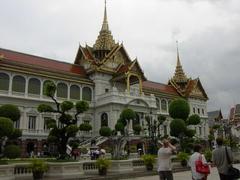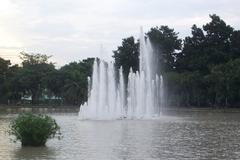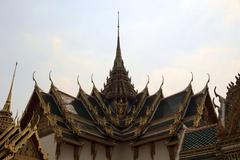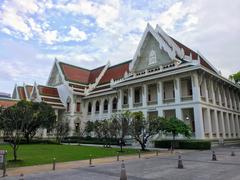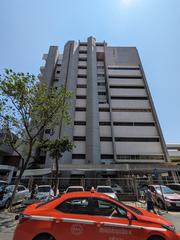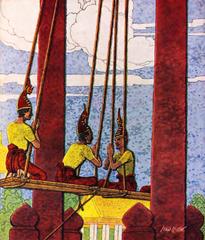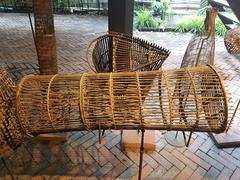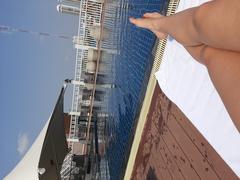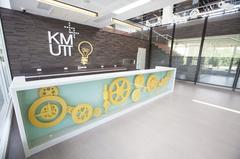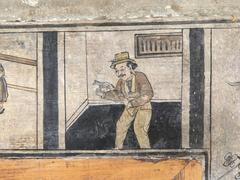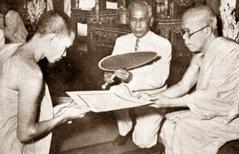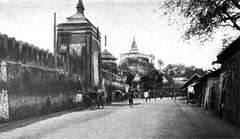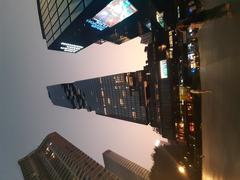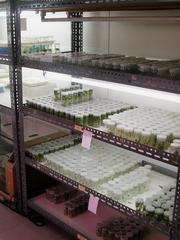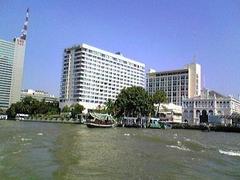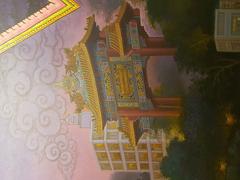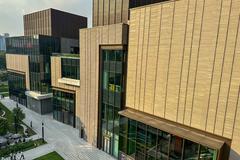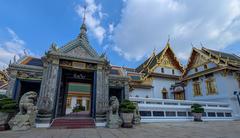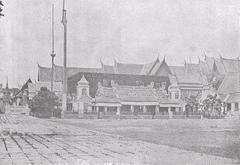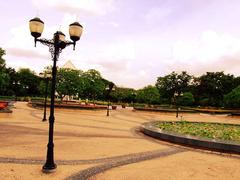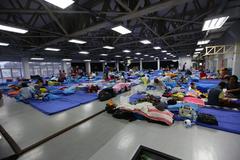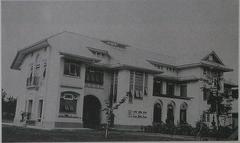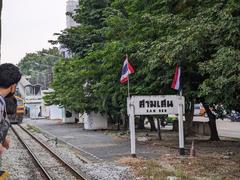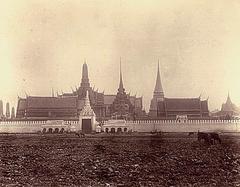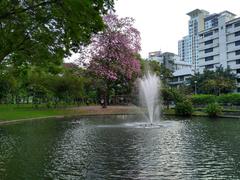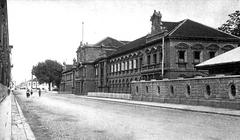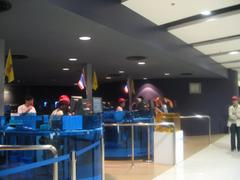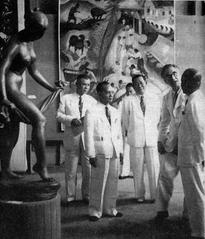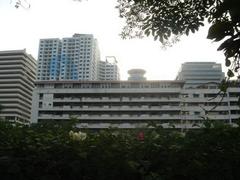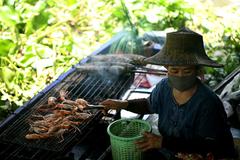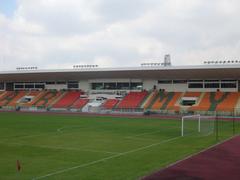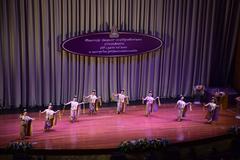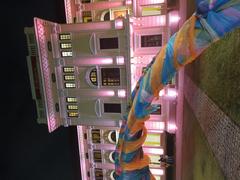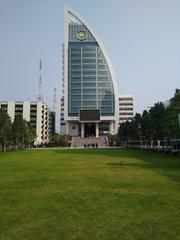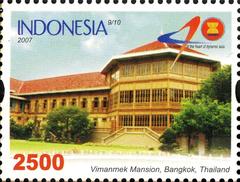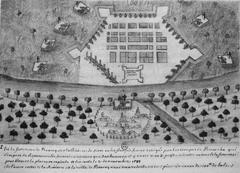Chakraphat Phiman Residential Hall: Visiting Hours, Tickets, and Historical Overview
Date: 15/06/2025
Introduction
The Chakraphat Phiman Residential Hall, located within Bangkok’s Grand Palace, is a profound symbol of Thailand’s royal heritage, ceremonial tradition, and architectural mastery. Though not open for public interior visits, its striking exterior and enduring role in royal rituals make it a must-see for anyone exploring Bangkok’s historical sites. This guide provides a comprehensive look at the hall’s origins, architecture, ceremonial significance, and essential visitor information—including hours, tickets, etiquette, and travel tips.
Authoritative sources for further reading include Britannica, Travelling Peoples, and the Audiala app.
Table of Contents
- Origins and Historical Background
- Architectural Design and Symbolism
- Role in Royal Ceremonies
- Transition to Ceremonial Use
- Visitor Information
- Cultural Significance
- Conservation and Restoration
- FAQs
- Conclusion
- References
Origins and Historical Background
Constructed during the reign of King Rama I (1782–1809), Chakraphat Phiman Residential Hall (Phra Thinang Chakraphat Phiman) was built as the principal royal residence for the early Chakri Dynasty. The name translates as “The Emperor’s Abode,” emphasizing both its status as the king’s private quarters and its symbolic association with royal authority. The hall’s strategic position at the heart of the Grand Palace underscores its importance within the royal precinct (Britannica; Travelling Peoples).
Over the years, the hall has been restored and adapted to suit the needs of subsequent monarchs, all while maintaining its original architectural essence (Kurby Blog).
Architectural Design and Symbolism
Chakraphat Phiman Hall is an exemplar of late 18th-century Thai royal architecture. It forms the central core of the Phra Maha Montien group and consists of three interconnected rectangular buildings aligned east-west, with the main bedchamber in the east and additional chambers in the west. This tripartite arrangement highlights traditional Thai principles of hierarchy and privacy.
Key architectural features include:
- Multi-tiered, steeply pitched roofs with chofahs (bird-head finials)
- Green and orange glazed roof tiles
- Intricate gilded wood carvings, mirrored mosaics, and gold leaf detailing
- Decorative motifs such as Garuda (the royal emblem) and naga serpents, symbolizing protection and sovereignty
The spatial arrangement of the hall reflects the Thai cosmological worldview, positioning the king as the axis between heaven and earth. The Royal Nine-tiered Umbrella above the king’s bed further symbolizes supreme authority (Thai Embassy; Picpost Postjung).
Role in Royal Ceremonies
From its inception, Chakraphat Phiman Hall served as the main residential quarters for the king and was the site of significant royal ceremonies. A longstanding tradition requires every newly crowned monarch to spend at least one night in the hall after coronation, symbolizing royal succession and the assumption of sacred duties (Travelling Peoples). The hall has also hosted other key events, such as royal birthdays and mourning rituals, reinforcing its ceremonial importance (Bangkok for Visitors; PlanetWare).
Transition to Ceremonial Use
By the early 20th century, the Grand Palace ceased to function as the king’s primary residence, and the Chakraphat Phiman Hall’s role shifted to ceremonial use. Today, it is reserved for coronation-related rituals and other state functions. While its interior remains off-limits to the public, the hall’s exterior can be admired as part of the Grand Palace tour (Britannica; Travelling Peoples).
Visitor Information
Hours and Tickets
- Grand Palace Hours: Daily, 8:30 AM – 3:30 PM (subject to change for official events)
- Tickets: Approx. 500 THB for foreign visitors; tickets include entry to the main palace grounds, Wat Phra Kaew (Temple of the Emerald Buddha), and the Queen Sirikit Museum of Textiles (The Stupid Bear).
- Chakraphat Phiman Access: Interior not open to the public; exterior visible from designated areas within the palace complex
Accessibility and Travel Tips
- Dress Code: Modest attire is mandatory (shoulders and knees covered). Rental clothing available at the entrance if needed.
- Getting There: Take the BTS Skytrain to Saphan Taksin station, then a river boat to Tha Chang Pier, followed by a short walk. Alternatively, use taxis or tuk-tuks but beware of unofficial guides.
- Facilities: Restrooms, water stations, and shaded rest areas available. Wheelchair accessibility is provided along main routes, though some steps and uneven surfaces exist.
- Best Time to Visit: Early morning or late afternoon to avoid crowds and midday heat. June is low season, so crowds are lighter but rain is possible.
Dress Code and Etiquette
- Shoes: Remove before entering any temple or sacred hall. Socks are permitted.
- Behavior: Maintain quiet and respectful conduct; avoid loud voices and public displays of affection.
- Photography: Permitted in outdoor areas; prohibited inside most sacred halls, including Chakraphat Phiman.
What to See
While the Chakraphat Phiman Hall itself is not open for tours, its exterior and meticulous design can be viewed from the palace courtyards. Other nearby highlights include:
- Wat Phra Kaew (Temple of the Emerald Buddha)
- Amarin Winitchai Throne Hall
- Queen Sirikit Museum of Textiles
- Wat Pho and the Chao Phraya River (nearby)
Guided Tours
Licensed local guides are highly recommended to provide historical and cultural context. Tours are available in multiple languages and can be booked at the palace entrance or through reputable agencies.
Cultural Significance
Chakraphat Phiman Hall’s association with coronation rituals and royal traditions cements its status as a pillar of Thai national identity. Its architectural and symbolic elements have inspired traditional Thai dress, notably the Chakraphat style, worn during formal occasions (Thai Embassy). The hall represents the unbroken continuity of the Chakri Dynasty and serves as a reminder of the monarchy’s role in Thai society.
Conservation and Restoration
Multiple restoration projects have preserved the hall’s structural integrity and decorative elements, ensuring that it remains a living monument of Thai heritage. These conservation efforts are supported by both the Thai government and the Royal Household (Kurby Blog).
Frequently Asked Questions (FAQs)
Q: Can visitors enter the Chakraphat Phiman Residential Hall?
A: No, entry is restricted to preserve its ceremonial sanctity. The hall can be viewed from the palace courtyards.
Q: What are the Grand Palace visiting hours and ticket prices?
A: The complex is open daily from 8:30 AM to 3:30 PM. Tickets cost around 500 THB for foreigners.
Q: Is there a dress code?
A: Yes. Modest, respectful attire is required—no sleeveless tops, shorts, or ripped jeans.
Q: Are guided tours available?
A: Yes, and they are highly recommended for historical context.
Q: What is the best way to reach the Grand Palace?
A: Via BTS Skytrain to Saphan Taksin and Chao Phraya Express Boat to Tha Chang Pier.
Conclusion
The Chakraphat Phiman Residential Hall stands as a testament to Thailand’s royal legacy, blending architectural grandeur with profound cultural and ceremonial significance. While its interiors remain reserved for royal use, its exterior can be appreciated by all who visit the Grand Palace. Observing proper etiquette, dressing respectfully, and considering a guided tour will greatly enhance your experience.
To stay updated on visiting hours, ticketing, and special events, consult the Grand Palace website, Travelling Peoples, or the Audiala app. Download the Audiala app for guided tours and real-time updates, and connect with us on social media for the latest news and cultural insights.
References
- Chakraphat Phiman Residential Hall: History, Visiting Hours, and Cultural Significance in Bangkok (Travelling Peoples)
- Chakraphat Phiman Residential Hall: Architecture, Symbolism & Visitor Guide to Bangkok’s Historic Gem (Kurby Blog)
- Visiting the Chakraphat Phiman Residential Hall: Hours, Tickets, and Historical Significance in Bangkok (Audiala)
- Chakraphat Phiman Residential Hall Visiting Hours, Tickets & Visitor Guide | Grand Palace Bangkok (The Stupid Bear)
- Grand Palace (Britannica)
- Bangkok for Visitors
- PlanetWare
- Thai Embassy
- Picpost Postjung
